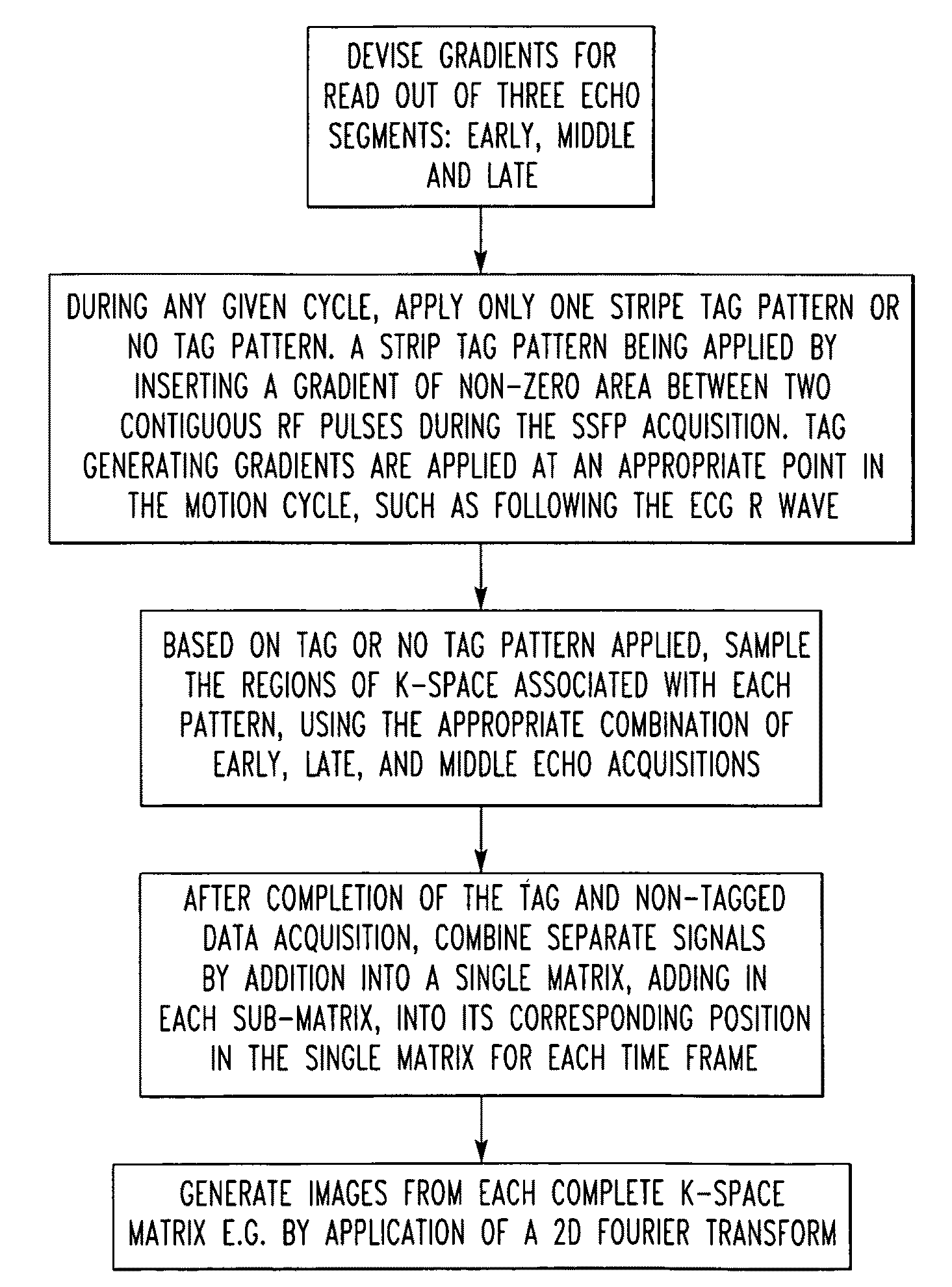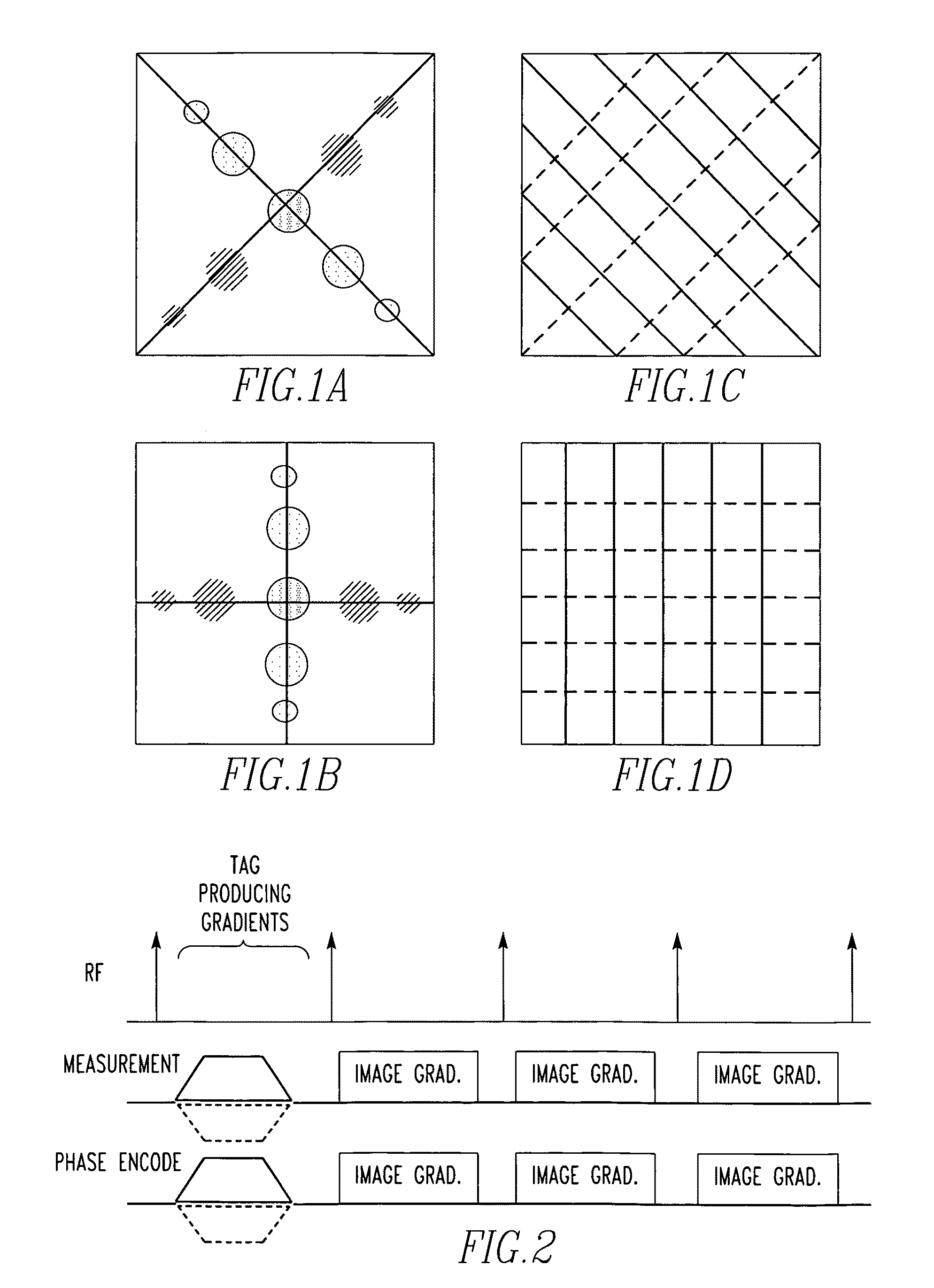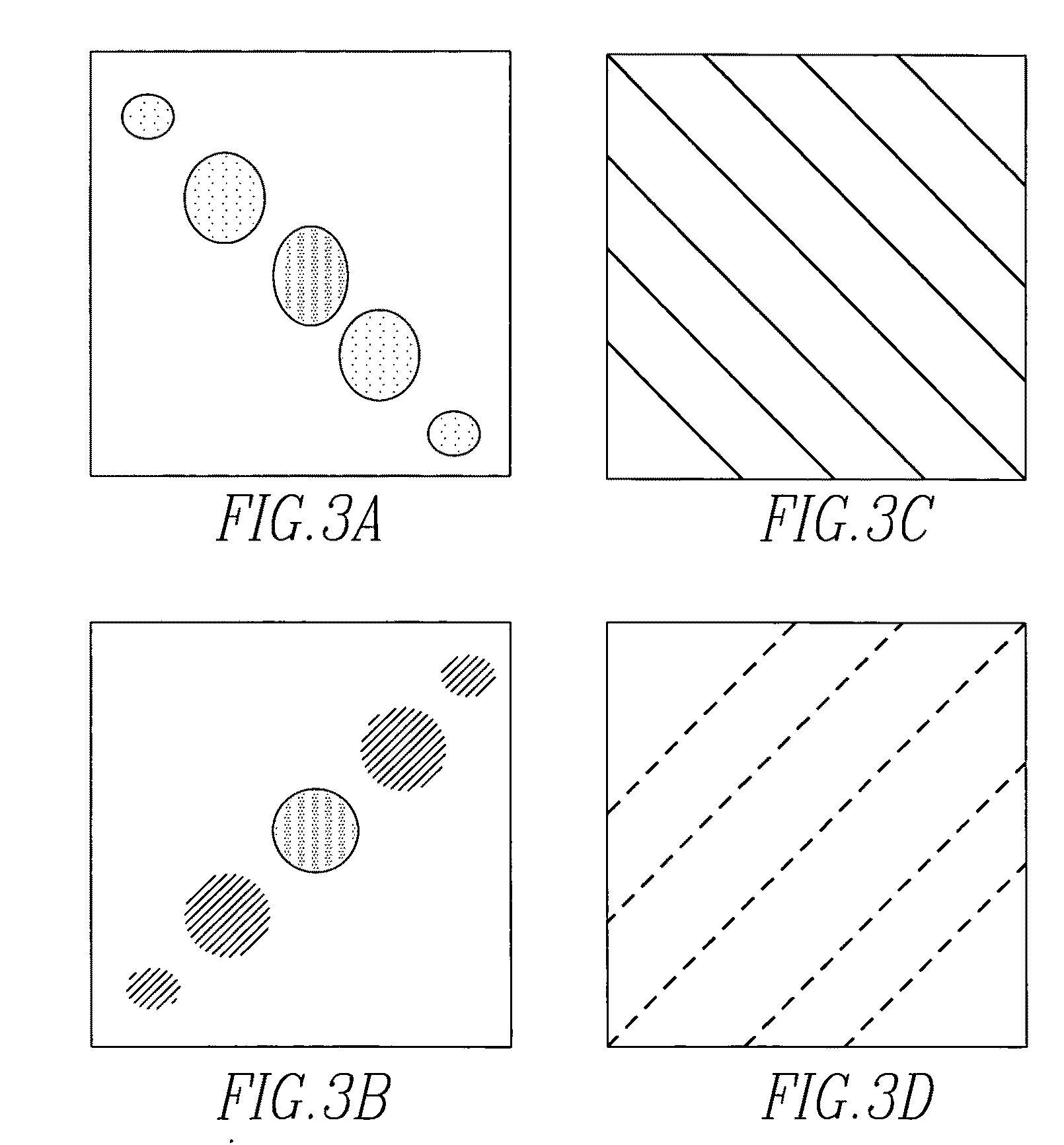Magnetic resonance imager, method and program which continuously applies steady-state free precession to k-space
a magnetic resonance imager and steady-state free precession technology, applied in the field of forming imaging of a moving portion of a patient, can solve the problems of no other approach achieving the acquisition characteristics of pressto, the contrast-to-noise ratio (cnr) of the grid tag line steadily deteriorates, and the common k-space cannot be applied to tags at 45°
- Summary
- Abstract
- Description
- Claims
- Application Information
AI Technical Summary
Benefits of technology
Problems solved by technology
Method used
Image
Examples
Embodiment Construction
[0025]Referring now to the drawings wherein like reference numerals refer to similar or identical parts throughout the several views, and more specifically to FIG. 12 thereof, there is shown a magnetic resonance imager 10 for forming images of a moving portion of a patient. The imager 10 comprises imaging coils 14. The imager 10 comprises a computer 12 that causes the imaging coils 14 to apply continuously steady-state free precession to k-space of a magnetic resonance image series of the patient and acquire the image series, and generates images from the image series.
[0026]Preferably, the computer 12 causes the imaging coils 14 to apply a tag pattern to a motion cycle of the image series. The computer 12 preferably causes the imaging coils 14 to acquire the image series which shows the tag pattern deforming.
[0027]Preferably, wherein the computer 12 causes the imaging coils 14 to apply taglines in only one direction or no taglines during the cycle. The computer 12 preferably causes ...
PUM
 Login to View More
Login to View More Abstract
Description
Claims
Application Information
 Login to View More
Login to View More - R&D
- Intellectual Property
- Life Sciences
- Materials
- Tech Scout
- Unparalleled Data Quality
- Higher Quality Content
- 60% Fewer Hallucinations
Browse by: Latest US Patents, China's latest patents, Technical Efficacy Thesaurus, Application Domain, Technology Topic, Popular Technical Reports.
© 2025 PatSnap. All rights reserved.Legal|Privacy policy|Modern Slavery Act Transparency Statement|Sitemap|About US| Contact US: help@patsnap.com



